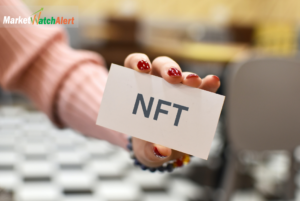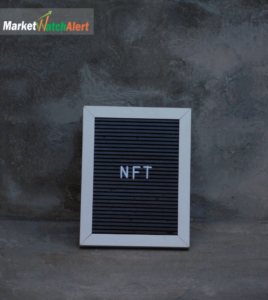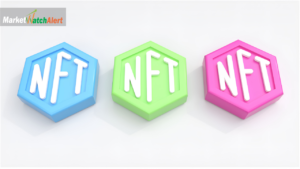Non-fungible memorabilia (NFTs) have captivated the creative minds of generators, collectors and backers across the planet, controlling another era of computerized power, imagination and business. As NFTs continue to gain momentum and progress, it is fundamental to study the patterns and predictions that shape the eventual fate of this unique biological system. Within this structure, we will delve into the fate of NFTs, examining emerging models, creative tasks, and visualizations for the coming period of non-fungible commemorations.
Predictions For The Next Era Of NFTs:
1. Mainstream Adoption:
NFTs will continue to move toward mainstream adoption, with increased participation from artists, brands, celebrities, and institutional investors.
The integration of NFTs into platforms, commerce and social networks will lower barriers to entry and lead to mass consumer abandonment.
2. Regulatory Clarity:
Regulatory structures and guidelines for NFTs will evolve to provide clarity and oversight in the growing NFT ecosystem.
Governments and non-monitoring bodies will work closely with stakeholders to address legal and compliance issues related to NFTs, including brand, intellectual property and investor protection.
3. Cultural Impact:
NFTs will have a profound artistic impact, reshaping how we perceive power, value and authenticity in the digital age.
The democratization of creativity and power enabled by NFTs will lead to new forms of expression, collaboration and community structure in different societies and communities.
Growth And Popularity Of NFTs
The demand for NFTs peaked between 2021 and 2022 for colorful reasons. First, blockchain junkies discovered a system for securely proving power on the Internet using failure and empirical unity. People were becoming more and more familiar with blockchain, and many were beginning to explore the possibilities of this new form of power on the Internet.

Artists have also discovered a direct way to bypass traditional gatekeepers and monetize their digital art. Likewise, the artist can now control the price, earn royalties through side deals, and admit exposure through open NFT trading.
Gaming brands have also discovered that the future of their attendance is closely linked to the future of NFTs. Thanks to non-fungible tokens (NFTs), players can now take advantage of in-game assets and monetize those assets through resale or loans. Traditional games have long been accused of the brutal power of virtual details. With NFTs, players can now authenticate their virtual information, prove their power, and even transfer power from one platform to another.
The concept of real-world means (RWA) tokenization began to gain momentum with the invention of blockchain and the perpetration of non-fungible commemorations. Although TrustCommerce introduced tokenization in 2001, the boat seems to have started sailing almost a decade and a half lately with the preface of blockchain.
RWA tokenization involves transubstantiating a real-world asset into a digital commemorative object and storing it as a record on the blockchain. Examples of property to tokenize include goods, real estate, art, and even intellectual property. The rise of NFTs also means that investors can purchase fractions of a high net worth asset or property via NFT forking.
In the entertainment and events space, organizers have started to use the power of blockchain tagging and apply NFTs as digital tickets. Celebrities also began to participate, attendance began to witness many celebrity participations and signatures, including from musicians, athletes, film votes and sports clubs. The high-profit deals obtained by joining forces with celebrities have attracted media attention and increased public awareness of non-fungible commemorations.
The Significance Of Artificial Intelligence (AI) And Machine Learning (ML) In The Future Of NFTs
Artificial Intelligence (AI) and Machine Mastery (ML) are key to solving some of the biggest problems with NFTs. According to Vijay Pravin, CEO and author of bitsCrunch, their UnleashNFT data analytics platform harnesses the power of advanced AI and ML algorithms to detect statistical anomalies. These anomalies act as a signal of fraudulent action. We thus play an active role in the discovery and prevention of fraud throughout the NFT geography.
At the same time, AI and ML have proven to be excellent tools for determining fair prices. By taking into account literal data, the strangeness of a digital collectible, current demand performance, trends, and overall demand sentiment, AI algorithms enable players to determine the fair value of the asks for NFTs.
Moreover,
NFT recommendation machines are becoming more common in the NFT space, especially in commerce. When recommending suitable non-fungible memorial items, these machines use reliable statistics, advanced algorithms and AI to dissect request gestures, stoner preferences and sales history.

This approach to providing a grounded approach enhances the overall stoner experience, encouraging the discovery of new collections and simplifying the process of investing in NFTs that match individual requirements. Additionally, these AI-based recommendation tools have become valuable tools for generators and artists to serve a more applicable audience.
Non-fungible token (NFT) trading also proactively combats NFT counterfeits by using AI to authenticate NFTs. Thanks to artificial intelligence, commerce has implemented advanced authentication systems to validate the legality of an NFT before putting it up for sale. This helps reduce the chances of investing in a fake digital collectible.
In the next section, let’s look at some of the attendance and attendance statistics surrounding non-fungible commemorations.
Statistics And Forecasts That Will Define The Future Of NFTs
The global capitalization of non-fungible token (NFT) demand stands at approximately $34.40 billion as of January 2024. In 2023, the profits of NFT demand players doubled from $892 million in 2022 to $1.6 billion.
If demand continues to grow at the reading emulsion annual growth rate (CAGR) of 18.55, NFT demand profits could reach $2.27 billion by the end of 2024. In this case , the profit could reach $3.16 billion. by 2027.
Yet one statistic seems to stand out among these data analyses. The year 2023 revealed a fairly nuanced demand structure.
According to Coinmarketcap, approximately 50 of all NFT systems in 2023 show demand capitalization between 100 and 1,000 ETH.
Within this different pitch, however, lies an implicit challenge for investors. Lower demand capitalizations often correspond to systems with limited vaults for robust security measures and comprehensive work. This could make them more vulnerable to fraudulent packaging, calling into question the conservative approach of implicit investors seeking legality amid the wide range of resulting schemes.
Likewise, a crucial revelation from exploring the distribution of demands is the particular attention paid to the capitalization of demands within the upper stratum. The top 50 NFT systems, although they represent less than 1 of the total systems, command a superb 52 of the total demand capitalization. This focus signifies a scenario in which a considerable share of capital is tied to a large number of selected systems, amplifying the impact of their performance on overall demand dynamics.
At the same time, this statistic indicates the largely competitive nature of demand for NFTs, which has created problems in swamp trading. In NFTs, swamp trading occurs when dealers instinctively inflate the price of non-fungible memorabilia by constantly buying and trading a collection within a platoon of dealers. The purpose of swamp trading is to produce an impression that a certain collection is in high demand, which also has the implicit consequence of driving up the price of the collection.

In an earlier report from 2022, bitsCrunch reported reporting approximately 3.9 million transactions out of 252 million NFT transactions passing through the Avalanche, Ethereum, and Polygon blockchains.
In the report, bitsCrunch also mentions that 333,000 totes were reported for commercial activity in the swamps.
While the focus on successful systems is not inherently problematic, investors should be aware of the implicit ramifications of similar demand dynamics. Rapid swings in the value of these top-performing systems could have cascading effects on broader demand for NFTs, calling into question a deep understanding of the interplay between top-performing systems and the overall health of demand.
For this reason, the brand created a categorization of 6 findings, as shown below:
| Categories | Sales (USD) for the last 2 yrs | Cumulative Count |
| Mildly Similar | 3,201,331 | 4,492,807 |
| Moderately Similar | 834,377 | 1,291,497 |
| Similar | 194,242 | 457,099 |
| Extremely Similar | 188,635 | 262,857 |
| Near Exact Matches | 45,410 | 74,222 |
| Exact Matches | 28,811 | 28,811 |
The UnleashNFTs data from bitsCrunch presented above indicates the findings of the BAYC case study. Study the screenshots below to learn more about some of the related matches. As noted above, newcomers, dilettante and established investors and collectors will need help determining the right NFTs to purchase.
At the same time, tracing the original source of an NFT to determine its legality requires the right logical and interpretation tools.
This shows that without UnleashNFT and other revolutionary data analysis platforms like bitsCrunch, making sense of NFT demand would be complicated and problematic.
Conclusion:
In conclusion, the future of NFTs holds immense promise of invention, dislocation and metamorphosis through colorful efforts and sectors. As NFTs continue to evolve and grow, we can expect to see an expansion of use cases, integration with the metaverse and DeFi, interoperability and sustainable business, as well as widespread abandonment and non-supervisory clarity. By adopting these trends and predictions, the next period of NFTs will shape digital frugality and revise the way we produce, collect and interact with digital means in times to come.
FAQs
How can NFTs be used in the future?
Some also suspect that NFTs could play a role in the coming metaverse, either as digital representations of physical objects you value or using them with your digital icon.
What is the next NFT trend?
The demand for NFT games is the upcoming researcher of NFTs, with significant profit growth and an expanding consumer base, with continued growth and invention expected in 2024. The virtual world Sandbox uses blockchain technology and NFTs to empower players and generators.
Why are NFTs important?
Benefits of NFTs
NFTs representing digital or physical works of art on a blockchain can eliminate the need for agents and allow merchandisers to connect directly with their target cult following (assuming artists know how to securely host their NFTs).
What is the new feature of NFT?
The new interpretation also allows junkies to organize their totes into groups, which can be sorted by investment strategy or portmanteau type to give more flexibility in managing NFT investments and make it easier to observe performance.
What is the expectation of NFT?
In the NFT market, the number of users is expected to amount to 16.35m users by 2028. User penetration will be 0.19% in 2024 and is expected to hit 0.20% by 2028.
How fast is the NFT market growing?
Global NFT Marketplace market is projected to reach US$ 1985.9 million in 2029, increasing from US$ 1590.6 million in 2022, with the CAGR of 3.4% during the period of 2023 to 2029.
What is the future of the NFT report?
Players can buy, sell, and trade these securely using blockchain technology, giving them real power and the ability to monetize their game. In the future, NFTs could enable cross-platform interoperability, allowing players to use their means in several games and virtual worlds.
How does NFT impact the world?
Because blockchains consume energy, NFTs can contribute to greenhouse gas emissions and climate change through their products, exchanges and warehouses.
How does NFT benefit society?
The crucial advantage of non-fungible memorials is the ability to demonstrate their power. NFTs can make it easier to designate properties to a certain fund because they operate on a blockchain network. NFTs have the ability to develop an open power structure.
How is NFT used in real life?
Non-fungible memorial items use blockchain technology to digitally signify power. NFTs can change the way you buy a house, buy insurance, adopt a plutocrat, and more. NFTs can be used for many purposes beyond collecting digital art.
What is the main purpose of NFT?
NFTs are commemorative items used to represent the power of unique details. NFTs allow their generators to tokenize things like art, collectibles, or even real estate.
Is NFT technology useful?
NFT investing is useful for establishing a clear chain of power over an asset, but it still includes the possibility of counterfeiting, fraud, and money laundering by plutocrats. The asset tokenized by the NFT may be missing, duplicated or tainted.
Why is NFT marketing important?
By using NFTs, businesses can create unique and engaging content, increase engagement, drive traffic, generate revenue, and increase brand visibility.
What is the future of NFT in 2030?
According to the report, the sector is expected to grow by a periodic emulsion growth rate of 33.7 percent over the next eight years. The increased demand for NFTs can be attributed to their different use cases across multiple domains, including gaming, music, movies, and sports.
How many NFT buyers?
Despite the unpredictable demand for cryptocurrency, NFT popularity has skyrocketed and its power has doubled between 2021 and 2022, from approximately 4.6 million to 9.3 million people.

